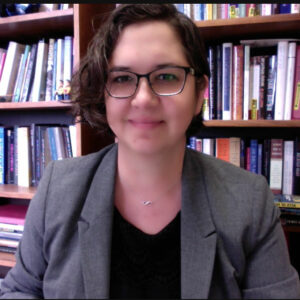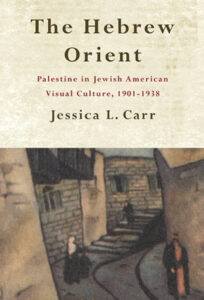Importance of Israel/Palestine to Jewish Americans
 Following the publication of her book The Hebrew Orient: Palestine in Jewish American Visual Culture, 1901-1938, Prof. Jessica Carr was invited to participate in a larger conversation on the importance of Israel in Jewish Americans’ lives. The Brandeis University Schusterman Center for the Study of Israel, led by Jonathan Sarna, planned and hosted Carr and two other scholars.
Following the publication of her book The Hebrew Orient: Palestine in Jewish American Visual Culture, 1901-1938, Prof. Jessica Carr was invited to participate in a larger conversation on the importance of Israel in Jewish Americans’ lives. The Brandeis University Schusterman Center for the Study of Israel, led by Jonathan Sarna, planned and hosted Carr and two other scholars.
 Many studies have looked at the importance of Jewish Americans to the lives of Jews in “pre-state” Palestine as well as after the United Nations created the State of Israel, and Carr’s research looks in the other direction. How has envisioning the land of Israel been a central part of Jewish religious practice, subjectivity, and group identity? In a time when travel to the Mediterranean became much more accessible, what did Jewish Americans show and tell each other and their Christian American and Muslim American neighbors? How did particular representations of the land of Palestine create distinct Jewish identities even as these images and visual representations of Palestine were often shared among Jews in the United States?
Many studies have looked at the importance of Jewish Americans to the lives of Jews in “pre-state” Palestine as well as after the United Nations created the State of Israel, and Carr’s research looks in the other direction. How has envisioning the land of Israel been a central part of Jewish religious practice, subjectivity, and group identity? In a time when travel to the Mediterranean became much more accessible, what did Jewish Americans show and tell each other and their Christian American and Muslim American neighbors? How did particular representations of the land of Palestine create distinct Jewish identities even as these images and visual representations of Palestine were often shared among Jews in the United States?
Carr’s research addresses some of the diffuse but essential ways that visions of Israel—periodicals, art calendars, encyclopedias, the 1933 World’s Fair, and pamphlets—helped Jews practice a sense of Jewishness as a way of being American.